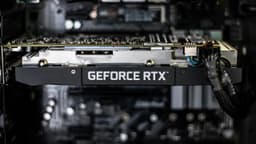Active Learning in Machine Learning: Enhancing Efficiency and Accuracy
Machine learning algorithms have revolutionized the way we approach complex problems and make predictions. However, they heavily rely on labeled data for training, which can be a time-consuming and expensive process. Active learning, a subfield of machine learning, aims to overcome this limitation by intelligently selecting the most informative instances to label, thus reducing the annotation effort while maintaining or improving the model's performance.
What is Active Learning?
Active learning is a semi-supervised learning approach that actively selects a subset of data instances for annotation, rather than relying on randomly labeled samples. By iteratively choosing the most informative instances from a pool of unlabeled data, active learning algorithms aim to achieve higher accuracy with fewer labeled examples. This process is especially useful when the cost of labeling data is high, such as in medical diagnosis or sentiment analysis.
The key idea behind active learning is to identify the instances that are most uncertain or difficult for the model to classify. By focusing on these instances, we can effectively improve the model's performance without the need for large amounts of labeled data. This iterative process of selecting informative samples, annotating them, and retraining the model continues until a desired level of accuracy is reached or additional annotation becomes less beneficial.
Strategies for Active Learning
Several strategies have been proposed in active learning to select informative instances for annotation:
-
Uncertainty Sampling: This strategy selects instances that the model is most uncertain about. For example, in classification tasks, the algorithm may select instances with the highest entropy or lowest confidence scores. By labeling these instances, the model can learn from its mistakes and reduce uncertainty.
-
Query-by-Committee: In this strategy, multiple models, often called a committee, are trained on different subsets of the data. The instances that cause the most disagreement among the committee members are considered informative and selected for annotation. This approach helps in identifying regions of high uncertainty.
-
Density-Based Sampling: This strategy selects instances that are in sparsely populated regions of the feature space. By focusing on such instances, active learning algorithms can explore areas where the model lacks sufficient coverage and improve its generalization capabilities.
-
Expected Model Change: This strategy estimates the expected change in the model's predictions after annotating a particular instance. By selecting instances that are likely to cause significant changes in the model, active learning algorithms can prioritize the most influential samples.
Benefits and Applications of Active Learning
Active learning offers several benefits and has found applications in various domains:
-
Reduced Annotation Effort: By selecting the most informative instances, active learning reduces the amount of labeled data needed to achieve comparable performance to traditional supervised learning methods. This significantly reduces the annotation effort and associated costs.
-
Improved Model Performance: Active learning allows models to focus on challenging instances and areas of uncertainty, leading to improved performance. By emphasizing the most informative samples, the model can generalize better and make more accurate predictions.
-
Semi-Supervised Learning: Active learning can be combined with unsupervised learning methods to leverage large amounts of unlabeled data. By actively selecting instances for annotation, it enables the use of unlabeled data in a more efficient and effective way.
Active learning has been successfully applied in various fields, including image classification, text classification, speech recognition, and natural language processing. Its benefits extend beyond traditional machine learning tasks and are particularly valuable when labeled data is scarce or expensive to obtain.












